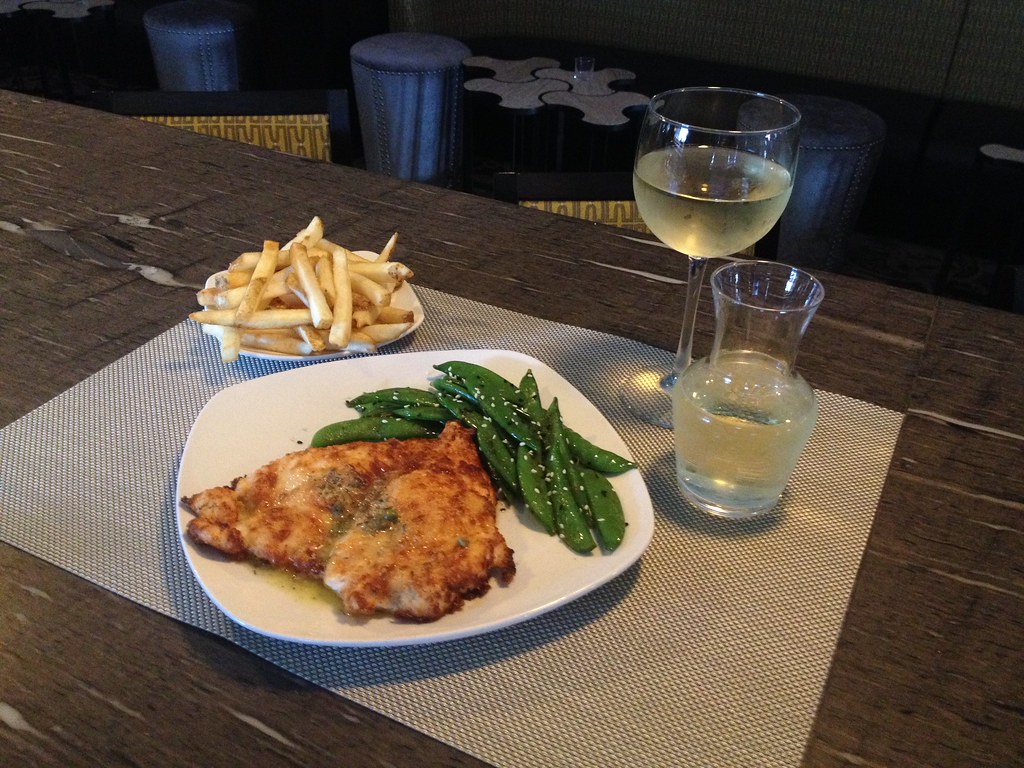For many people, the most challenging aspect of drinking wine is knowing how to match it with food. With over 75 different wines on our bottle and glass list, we are confident there will be one that fits your taste. Yet knowing which specific one to choose with your meal can be confusing.
One of the most common questions we receive prior to ordering a glass or bottle is, "What one matches best with a specific dish?" There is a general rule of thumb when it comes to choosing the right combination. However, more and more, servers and chefs must look at how a dish is prepared in order to make the best suggestion.
When it comes to serving seafood, for example, white wine is not always the only suggestion we can make. Due to new flavor influences and cooking techniques, the old adage of serving white wine with all fish does not necessarily apply.
 In other words, to know that you’ll be ordering scallops is not all that’s relevant in choosing a wine. How are the scallops being prepared? Are they raw, poached, boiled, baked, broiled, grilled, roasted, deep fried, or blackened? Is there a cream sauce, fruit chutney, or an herb butter to accompany it? Once we consider how the fish is prepared, how cooking transforms its texture, and what its accompaniments are... only then can we can offer our best suggestion.
In other words, to know that you’ll be ordering scallops is not all that’s relevant in choosing a wine. How are the scallops being prepared? Are they raw, poached, boiled, baked, broiled, grilled, roasted, deep fried, or blackened? Is there a cream sauce, fruit chutney, or an herb butter to accompany it? Once we consider how the fish is prepared, how cooking transforms its texture, and what its accompaniments are... only then can we can offer our best suggestion. There are six elements to consider in helping to pair food with wine:
Fat
A lot of our favorite foods - both meat and dairy products - have high levels of fat. Wine doesn’t contain fat, so when matching a wine with fatty foods, remember that it has to balance that fat with acid, cut it with tannin, or match its richness with alcohol.
Acid
In wine, it adds freshness and lift. It will do the same with food. When looking for a wine to go with an acidic dish, you should make sure that the perceived acidity of the wine is at least equal to that of the food, or the wine will taste bland and washed out.
Salt
Salty foods seem to limit wine choices. Salt can do strange things to your palate with wine. But with a bit of imagination, you can introduce your taste buds to some remarkable combinations of salty foods and sweet wines. Bleu cheese and Sauternes is another one of the world’s classic food and wine combos.
Sweetness
With desserts, you must be certain that the wine tastes sweeter than the dessert; otherwise the dessert will strip the wine of its sweetness and render it bitter or tart.
Bitterness
Anything more than just a hint is likely to be perceived as unpleasant. When bitterness in wine meets bitterness in food, it acts the opposite of sugar. One does not cancel out the other; they merely combine, so be careful.
Texture
As for matching textures, think light and heavy. Light foods are best with light wines; heavy foods with heavy wines. That’s the safest way to go about it. Try to match a wine's body to the power of the strongest ingredient in the food. Serve delicate-flavored foods such as simple white fish or poached chicken with lighter bodied wines and stronger, more robust foods such as grilled tuna with spiced lentils or osso buco with full-bodied wines. Many white wines will do jobs which are conventionally regarded as red wine jobs, and vice versa.
For more tips, click here to view 15 examples of what works well with what.
And remember that for every rule of wine pairing there is, you will often find just as many conflicting opinions. The most important rule of all is to trust your own palate and enjoy! With over 75 bottles to choose from, you have to start somewhere!
And we do have wine doggy bags to take home your leftover wine. Cheers!

With the carefully chosen wine and food pairings on our website, you may elevate your culinary experience. Discover the techniques for combining flavors that are very memorable.
ReplyDeleteExperience reliable, smart garage access with Chamberlain Garage Door Openers Solutions. Designed for security, convenience, and seamless control, Chamberlain’s advanced technology keeps your home protected while making everyday entry effortless. Upgrade to powerful performance, quiet operation, and connected features you can trust.
ReplyDeleteWith the carefully chosen wine and food pairings on our website, you may elevate your culinary experience. Discover the techniques for combining flavors that are very memorable.
ReplyDeleteMedjool Date Palm In California